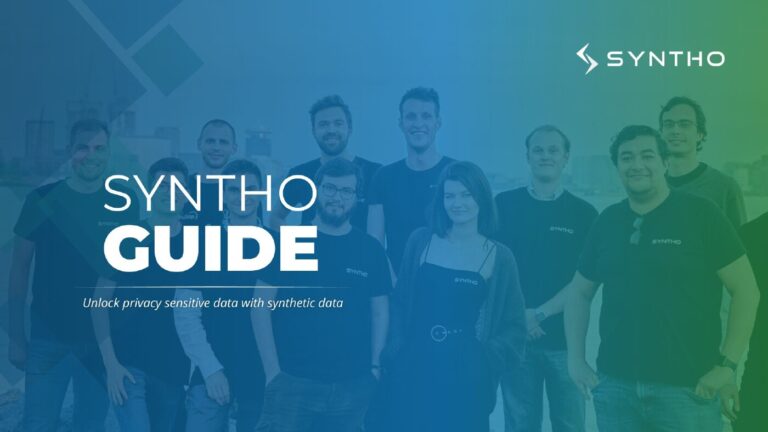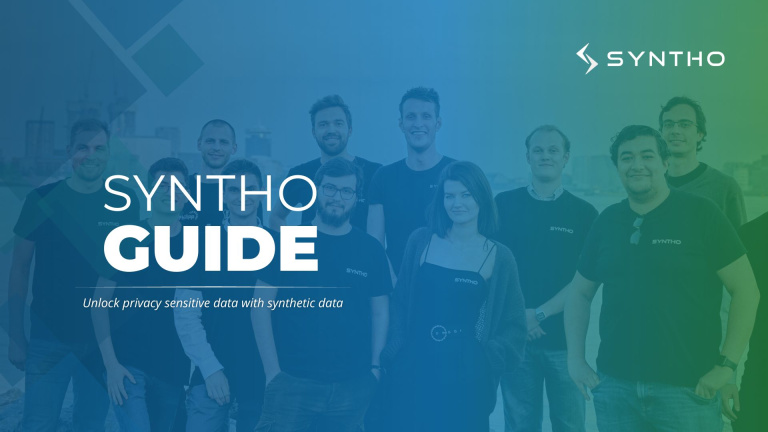Synthetic Data for Analytics
Build your strong data foundation with easy and fast access to as-good-as-real AI-generated synthetic data
Introduction to analytics
We are in the middle of the data revolution and data-driven solutions (e.g. from dashboards [BI] to advanced analytics [AI & ML]) are about to change our entire world. However, those data-driven solutions are only as good as the data that they can utilize. This is often challenging when the required data is privacy sensitive.
Hence, a strong data foundation with easy and fast access to usable, relevant and required data is essential to develop data-driven solutions (e.g. dashboards [BI] and advanced analytics [AI & ML]). However, for many organizations, it is challenging and time consuming to access relevant data.
Analytics challenges
For many organizations, it is challenging and time consuming to access relevant data, required to realize data driven-innovation.
- Without (timely access to) data, data driven innovation and analytics is not possible
- You miss valuable data-opportunities and momentum due to “locked” data
- Data is critical to be smarter than the competition
Getting access to data takes ages
- Privacy regulations like the GDPR are strict and limit access to data
- You will be confronted with a lot of bureaucracy and paperwork, causing dependencies and “legacy-by-design”
- Overhead like internal processes, risk assessments, data access requests are time consuming
Anonymization does not work
- Anonymization destroys your data, making it no longer suitable for analytics (garbage in = garbage out)
- Anonymization does not result in anonymous data. Privacy risks will always be present
- Classic anonymization techniques are not scalable, because they work different per dataset and per data type
Our solution: AI-generated synthetic data
Artificially Generated
Synthetic data is artificially generated by using algorithms and statistical techniques
Mimics Real Data
Synthetic data replicates the statistical characteristics and patterns of real-world data
Privacy-by-design
Synthetically generated data consists of completely new and artificial datapoints with no one-to-one relationship to real data
What makes Syntho's approach unique?
Assess generated synthetic data on accuracy, privacy, and speed
Syntho’s quality assurance report assesses generated synthetic data and demonstrates the accuracy, privacy, and speed of the synthetic data compared to the original data.
Our synthetic data is assessed and approved by the data experts of SAS
Synthetic data generated by Syntho is assessed, validated and approved from an external and objective point of view by the data experts of SAS.
Synthesize time-series data accurately with Syntho
Time series data is a datatype characterized by a sequence of events, observations and/or measurements collected and ordered with date-time intervals, typically representing changes in a variable over time, and is supported by Syntho.
Do you have any questions?
Talk to one of our experts
Why do organizations use AI Generated Synthetic Data for Analytics?
Unlock (sensitive) data
- Synthetic data is exempt from privacy regulations, such as the GDPR
- Unlock personal data and have access to more data that was previously restricted (e.g. due to privacy)
As-good-as-real data
- An AI generated synthetic data twin is statistically identical in comparison to the original data
- Use AI generated synthetic data as-if it is original data
Easy, fast and scalable
- Bypass internal bureaucracy, processes, risk assessments, data access requests and similar time consuming overhead
- Scalable solution that works the same for each dataset and for each datatype
Value
Build your strong data foundation with AI-generated synthetic data
- Be smarter than (and even beat) the competition
- Leverage new and more innovation opportunities
- Unlock data, and thereby valuable insights
- Mitigate overhead and bureaucracy
- Realize data-driven innovation
- Boost your data-strategy and data innovation adoption

Save your synthetic data guide now!
- What is synthetic data?
- Why do organizations use it?
- Value adding synthetic data client cases
- How to start





